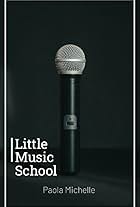Advanced search
- TITLES
- NAMES
- COLLABORATIONS
Search filters
Enter full date
to
or just enter yyyy, or yyyy-mm below
to
to
to
Exclude
Only includes titles with the selected topics
to
In minutes
to
1-50 of 274
- For the genuinely romantic depictions of sex on screen, actors and directors can face a myriad of challenges. Film sets are often packed, demanding, and tiring. It's only in the last few years that a specified role to guide and coach actors for love scenes has become mainstream. Intimacy coordinator Ita O'Brien shows how she coaches actors and uses props to make them feel comfortable performing sex scenes in films.
- The fight scenes in "Everything Everywhere All at Once" put a fresh spin on classic kung fu movies. Insider spoke with stunt coordinator Timothy Eulich and fight choreographers Andy and Brian Le about how the movie's most impressive action sequences came together.
- Professional dominatrix and certified sexologist Damiana Chi rates nine dominatrix scenes in movies and TV, such as "Euphoria," for realism. Chi breaks down the accuracy of ethics and safety procedures of BDSM scenes in "Euphoria" (2019), "Transparent" (2016), and "The Wolf of Wall Street" (2013). She looks at the plausibility of BDSM sessions in "Bonding" (2019), "Pose" (2018), and "Billions" (2018). She also breaks down the realism of protocols that happen outside of BDSM sessions in "Secret Diary of a Call Girl" (2007), "Love and Leashes" (2022), and "Fifty Shades of Grey" (2015).
- Bringing characters like Spider-Man and Captain Marvel to life on screen requires some real-life superheroes off-screen. Specialized teams and experts carefully plan and carry out the stunts, costumes, and special effects that make iconic films like the Avengers the impressive spectacle audiences love. From actual bus crashes in "Shang-Chi and the Legend of the Ten Rings" (2021) to detailed makeup and training in "Black Panther" (2018), here's what Marvel movies look like behind the scenes.
- Retired ATF agent Jay Dobyns discusses the years he worked as an undercover investigator who infiltrated the Hells Angels, an outlaw motorcycle gang, from 2001 to 2003 as part of Operation Black Biscuit. He speaks with Insider about his experience with gang and its inner workings.
- Acting coach and director Lauren Patrice Nadler critiques some of movies' most famous - and infamous - love-at-first-sight scenes. She reviews iconic couple introductions that range from great to mediocre to downright terrible, breaking down what went right and wrong in the actors' performances.
- Former CIA intelligence officer Andrew Bustamante rates all the "Mission: Impossible" movies, starring Tom Cruise, for realism. Bustamante looks at field-operation scenes in "Mission: Impossible" (1996), and "Mission: Impossible 2" (2000). He breaks down spy gadgets and disguises in "Mission: Impossible III" (2006), and "Mission: Impossible - Ghost Protocol" (2011). He compares Cruise's physical skills to real-life CIA training in "Mission: Impossible - Rogue Nation" (2015), "Mission: Impossible - Fallout" (2018), and "Mission: Impossible - Dead Reckoning Part One" (2023).
- Diandra Leslie-Pelecky takes a closer look at the physics of the "Fast and Furious" franchise. Here she reacts to 11 memorable scenes from the popular movie series and rates them based on their accuracy.
- Kenneth Bombace, the CEO of security firm Global Threat Solutions, reacts to 10 memorable bodyguard scenes from movies and TV and rates them based on their accuracy. Bombace looks at private security details under attack in "Man on Fire" (2004) and "Bodyguard" (2018). He addresses scenes featuring pop stars at concerts and award shows, such as "Taken" (2008) and "The Bodyguard" (1992). He also discusses transporting and taking care of political clients, as seen in "The Hitman's Bodyguard" (2017) and "The West Wing" in Season Three episodes 20 and 21 (2002), and billionaires like Tony Stark in "Iron Man 3" (2013).
- This short documentary demonstrates how the animators of "Spiderman: Into the Spiderverse" adapted old-school animation techniques, while inventing new ones to tell their story in a unique way.
- Marine biologist and doctoral student Amani Webber-Schultz rates 10 shark attacks in movies and TV shows, such as "Jaws," for realism.
- Garry Adelman, chief historian of the American Battlefield Trust, rates nine American Civil War battles in movies, commenting on Civil War-era artillery and rifles, explaining the use of dynamite and other explosives, breaks down the military strategy seen in the battle scenes and finally, he separates fact from fiction regarding Civil War-era surgeries.
- Nicholas Irving, author, and former soldier, rates 11 sniper scenes for realism in movies. Irving rates the realism of classic war movies such as "Clear and Present Danger" (1994), "Enemy at the Gates" (2001) and "Saving Private Ryan" (1998). He breaks down long-range-sniping scenes featuring Will Smith in "Gemini Man" (2019) and Mark Wahlberg in "Shooter" (2007). He also looks at modern-day war movies set in Iraq and Afghanistan, such as "American Sniper" (2014), "Jarhead" (2005), "Lone Survivor" (2013), and "The Hurt Locker" (2009). Irving rates the realism of the weapons used, along with body position, stealth, and environment.
- The Director of Photography of Amazon's hit comedy "The Marvelous Mrs. Maisel" breaks down the innovative opening shot from the show's second season. We watch Midge as she answers phones and swivels around the basement of the fictional, yet swanky department store, B. Altman.
- World War I historian Alexander Watson rates six First World War battle scenes from movies and TV shows for realism. He discusses the accuracy of trench warfare in "All Quiet on the Western Front" (2022), featuring Daniel Brühl, and "Wonder Woman" (2017), starring Gal Gadot. He also comments on aerial combat and gas masks in "The Red Baron" (2008) and "The Lost City of Z" (2016), starring Charlie Hunnam. Watson analyzes the guns, artillery, tanks, grenades, and other weapons used in "Sajjan Singh Rangroot" (2018) and "Gallipoli: End of the Road" (2013).
- Naval warfare expert Evan Wilson rates nine naval warfare scenes in movies and television shows, such as "Pirates of the Caribbean: The Curse of the Black Pearl", for realism. Wilson is an assistant professor at the US Naval War College and an expert in 18th-century naval warfare.
- The second episode of "The Lord of the Rings: The Rings of Power" centers on an epic storm in the Sundering Seas. Pulling it off involved a method that has become Hollywood's go-to approach for creating storms at sea: filming the sequence in a giant water tank.
- Before the widespread use of CGI, filmmakers used surprising in-camera tricks and optical illusions to fool audiences. Early filmmakers like Georges Méliès could add a hidden cut to film a wide array of illusions. Creative composites allowed for an invisible character in 1933's "The Invisible Man" and for Moses to part the sea in "The Ten Commandments." Artists literally painted on top of shots to extend sets in "Citizen Kane" and create fantasy worlds in "The Wizard of Oz." While most of these methods are obsolete today, new technologies like the LED projection used in "The Mandalorian" and the motion-control cameras in 2020's "The Invisible Man" build off these past methods.
- Guillermo del Toro's Netflix adaptation of "Pinocchio" breathes new life into the over-century-old art form of stop-motion animation. The film achieved a new level of expressiveness in its animated puppets by marrying traditional stop-motion techniques with newer technologies. Insider spoke with "Pinocchio" puppet fabrication supervisor Georgina Hayns and animation supervisor Brian Leif Hansen about the labor of love behind the film. Hayns and Leif Hansen are world-renowned stop-motion artists who brought their expertise to the three-year undertaking that was "Pinocchio." Previously, Hayns supervised character fabrication for "Kubo and the Two Strings" (2016), "The Boxtrolls" (2014), "ParaNorman" (2012), and "Coraline" (2009). Leif Hansen was an animator on "Missing Link" (2019), "Fantastic Mr. Fox" (2009), and "Frankenweenie" (2012). Both artists worked on Tim Burton's "Corpse Bride" (2005), which was pioneering for its use of geared heads to express nuanced emotion in stop-motion characters, a technique adopted in "Pinocchio." Meanwhile, other stop-motion films like "Coraline" laid the groundwork for the implementation of 3D printing technology in "Pinocchio." Del Toro's team built and expanded upon all of these tools and more to light up the lived-in world of "Pinocchio".
- As tensions with China build and the US military sends more troops to the Asia-Pacific region, soldiers with the skills to fight and survive in the jungle are increasingly vital. The US Army trains soldiers for jungle warfare at the 25th Infantry Division's Lightning Academy on the island of Oahu in Hawaii. Insider's chief video correspondent Graham Flanagan spent 12 days inside the Army's Jungle Operations Training Course, where a cross section of soldiers of various ranks and experience levels learn to fight, move, and survive in the jungle. Eighty students begin the course on day one, but only 51 will make it to graduation. The rest are dropped from the course by failing one of five critical tests. On day nine, students begin a three-day culminating exercise that incorporates the skills and lessons taught in the course, such as rope systems, rappelling, survival skills, small-unit tactics, and land navigation. Students who graduate from the course receive the Army's coveted jungle tab.
- Not only do fake drugs in movies have to look accurate and be safe to ingest, they also need to act like the drugs. For example, tobacco can't be substituted for cannabis because tobacco smoke isn't as heavy as cannabis smoke and the difference is noticeable on camera.
- How do you convey the presence or someone or something in a scene without the audience actually seeing it? That's the special challenge of horror-movie sound design. Insider visited Alchemy Post Sound, the foley studio behind "The Invisible Man" and a slew of other horror projects, to find out how horror movies use sound to play with viewers' minds.
- World War II historian John Curatola rates eight battle scenes in movies and television for realism. He discusses the accuracy of World War II battle scenes from "Saving Private Ryan" (1998), starring Tom Hanks; "Dunkirk" (2017), featuring Tom Hardy; and "Band of Brothers" S1E3 (2001), with Damian Lewis. He also comments on the weaponry used in "Fury" (2014), with Brad Pitt; "Patton" (1970); and "Enemy at the Gates" (2001). Curatola analyzes the tactics displayed in "The Forgotten Battle" (2020) and "Defiance" (2008), starring Daniel Craig.
- Retired US Army drill sergeant Lamont Christian rates US military boot-camp scenes in movies and TV shows for realism. Christian breaks down the early stages of boot camp in "Full Metal Jacket" (1987) and "Cherry" (2021). He looks at weapons and physical training in "Forrest Gump" (1994), "Jarhead" (2005). "Hacksaw Ridge" (2016), and "Band of Brothers" (2001). He explains the plausibility of boot-camp scenarios in "Captain America: The First Avenger" (2011), "Private Valentine: Blonde and Dangerous" (2008) aka Major Movie Star, and "Tribes" (1970). Christian also looks at the drill sergeants and drill instructors in "An Officer and a Gentleman" (1982) and "Stripes" (1981). His favorite movie about drill instructors is "The D.I." (1957) starring Jack Webb.




